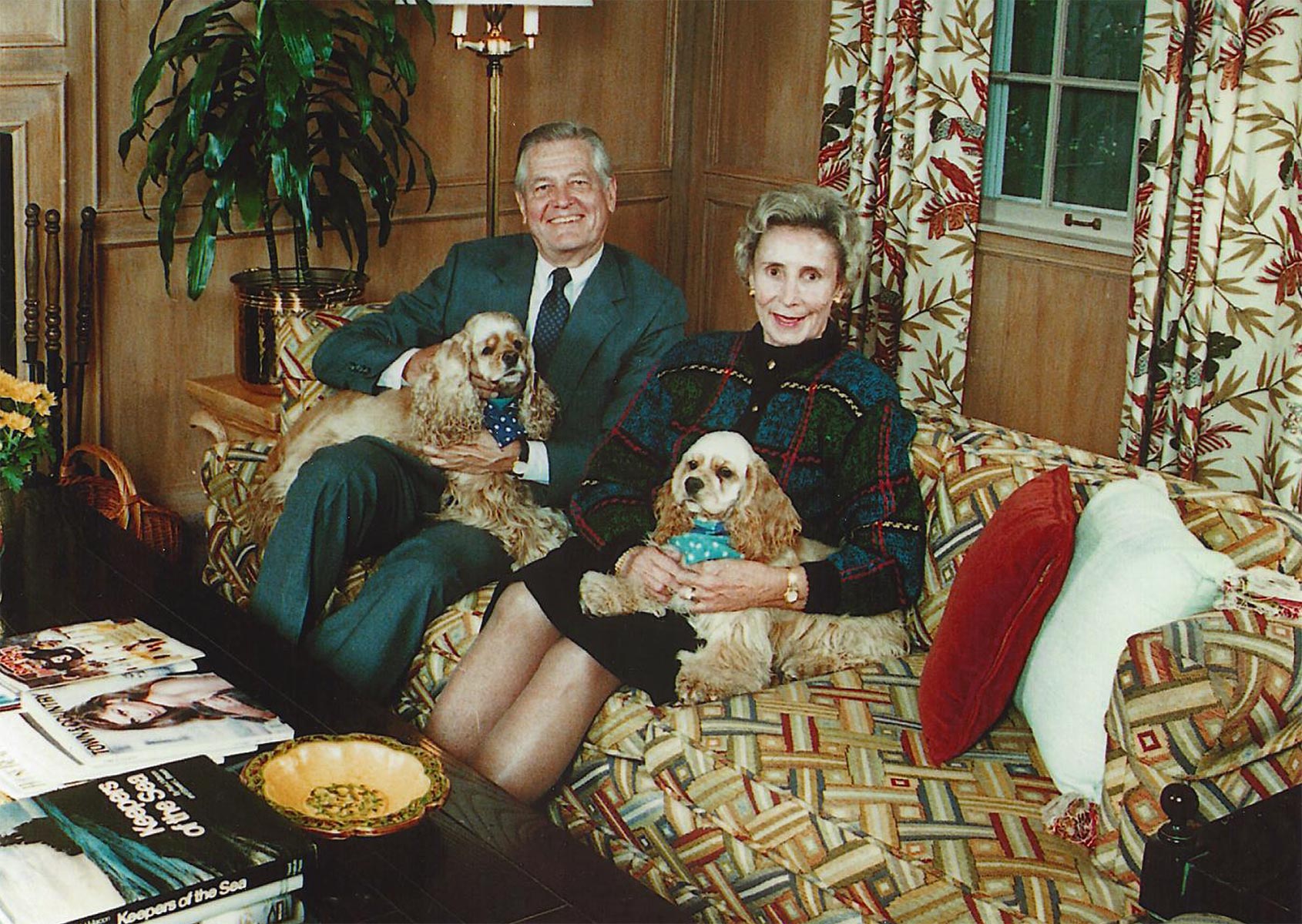About the College
Our mission is to nurture curious and creative minds to thrive in the ever-changing media and communication professions. Our inclusive “do from day one” experience is rooted in hard work, collaborative problem-solving and the ethical pursuit of truth to uphold democracy.
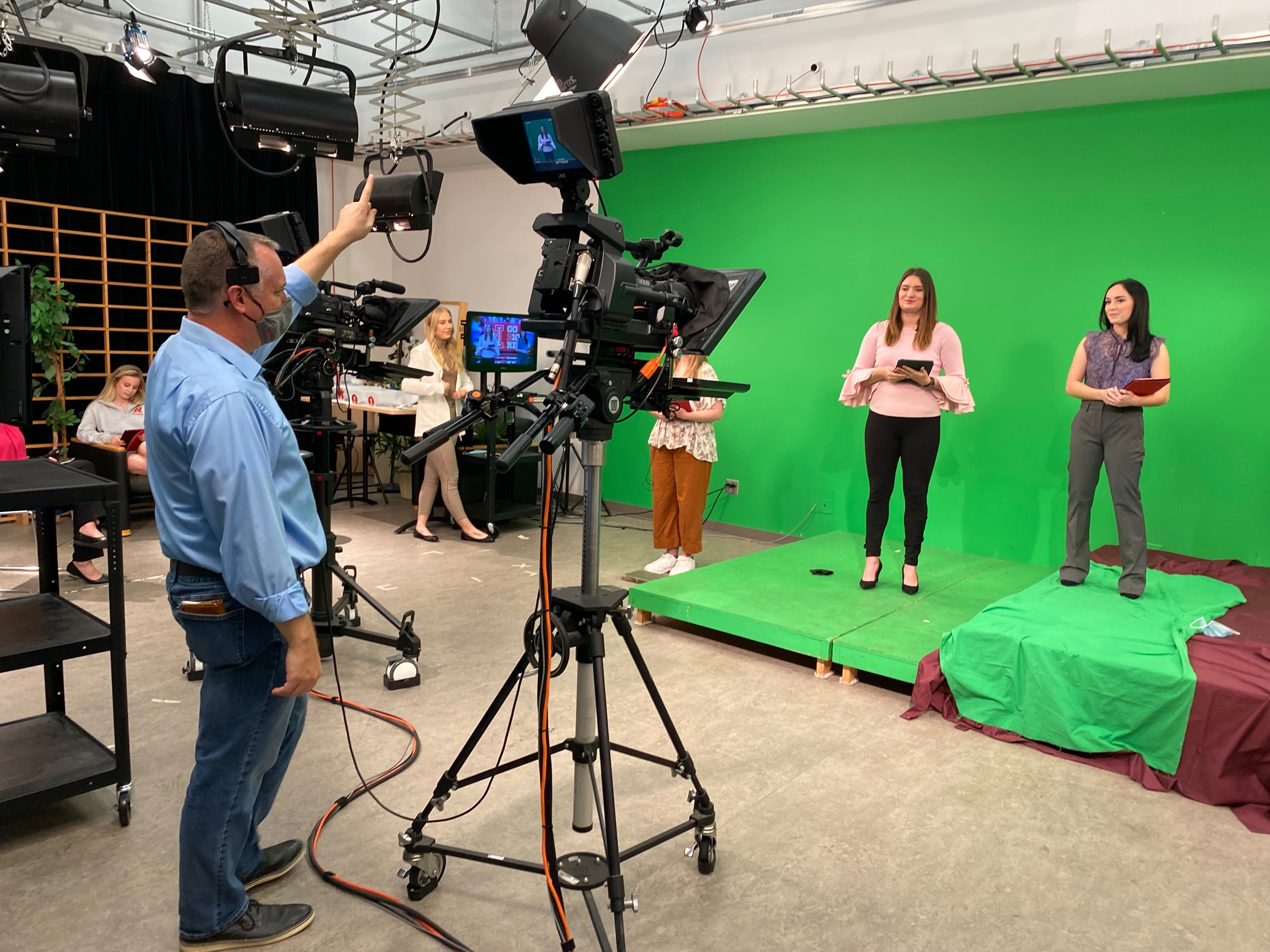
Our History
-
1894
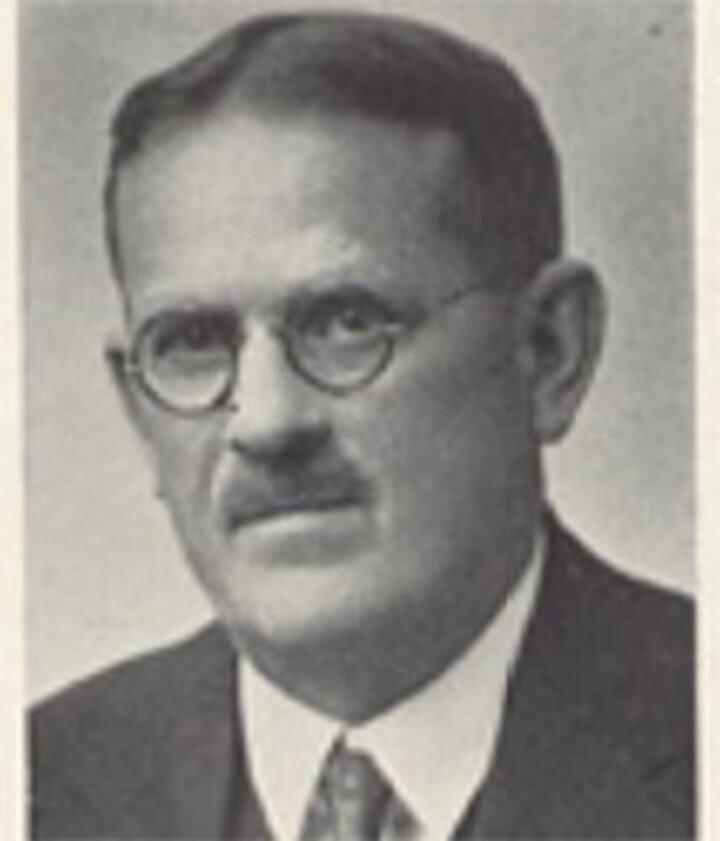
Will Owen Jones teaches the first journalism class at UNL (which included Willa Cather).
-
1923
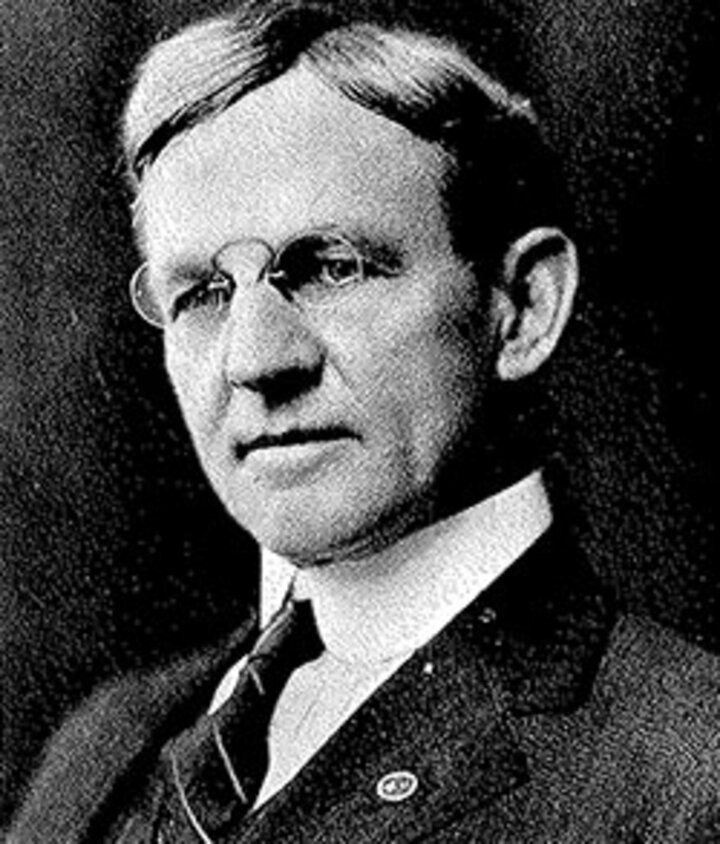
The School of Journalism is established; Miller Moore Fogg is named director; J Days celebration is established.
-
1926
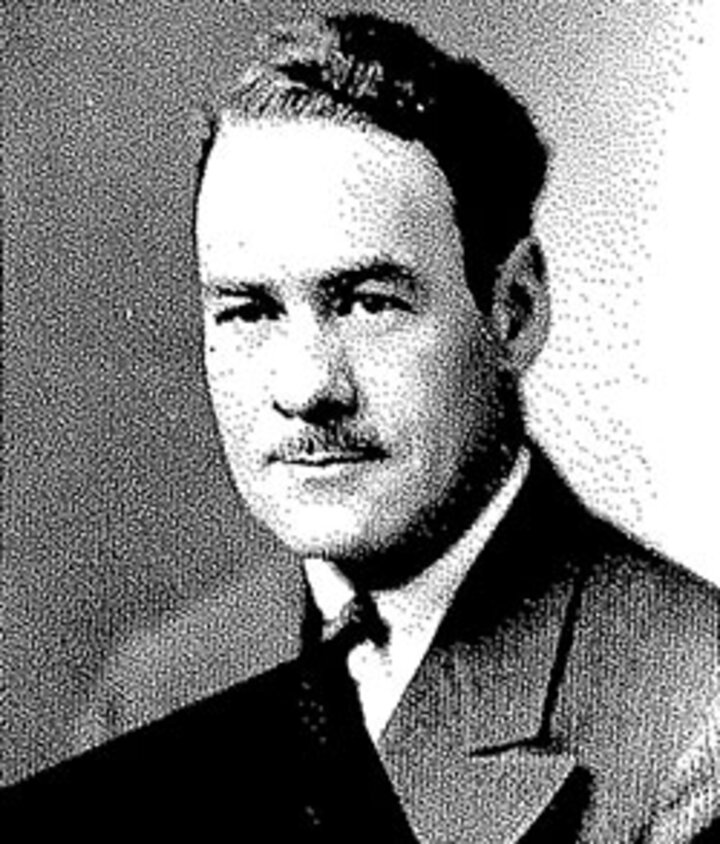
Gayle Walker becomes director of the J school after Miller Fogg's death. He served as director from 1926 to 1941.
-
1942
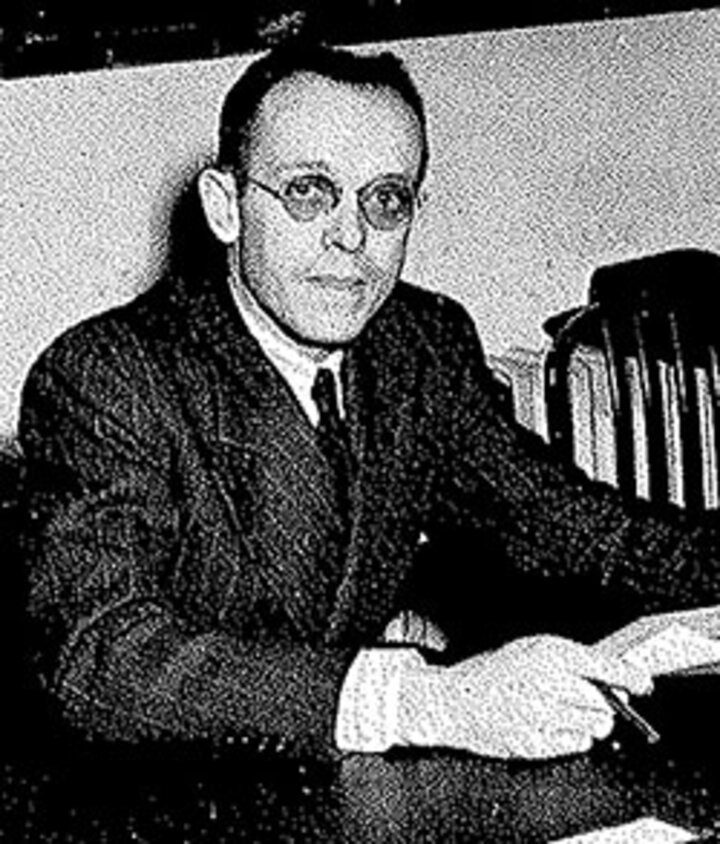
Gayle Walker dies; Harold Hamil becomes director of the J school. Hamil served from 1942 to 1944.
-
1944
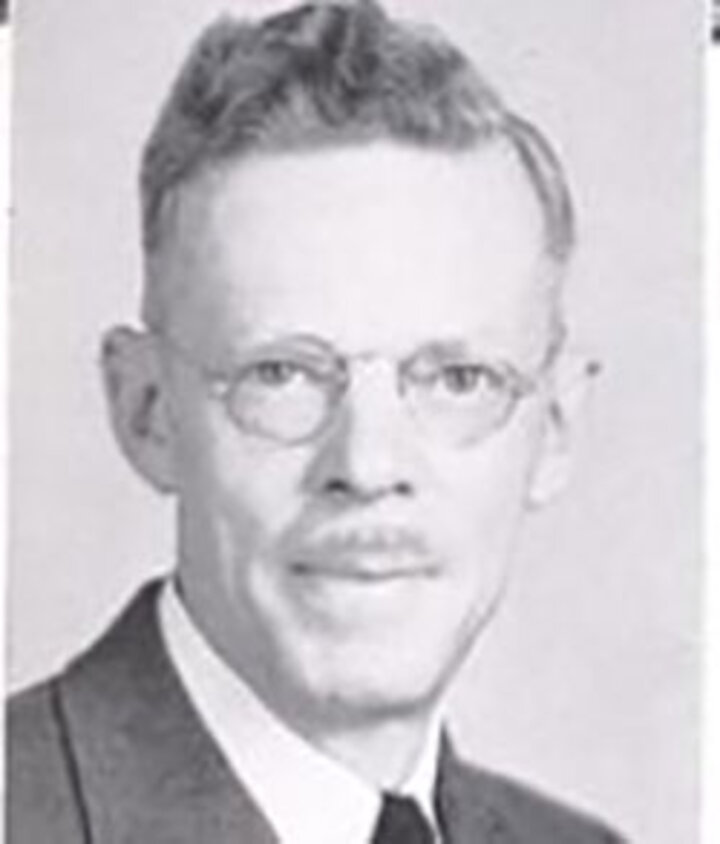
Business professor Forest Blood, who is identified with advertising courses, is named interim director. Blood served from 1944 to 1946.
-
1946
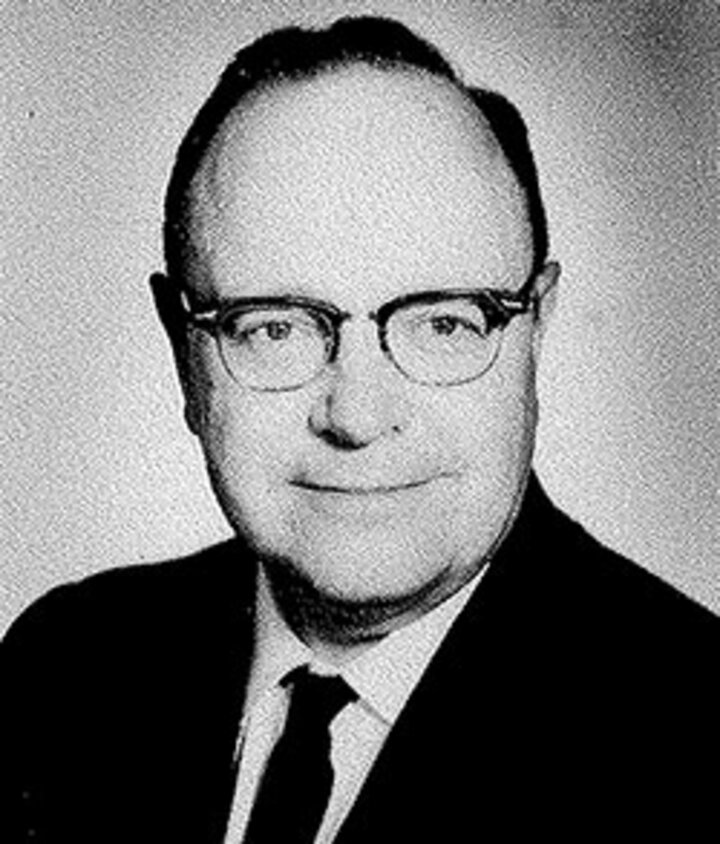
William Swindler becomes director of the J school; radio journalism courses are added to the curriculum.
-
1948
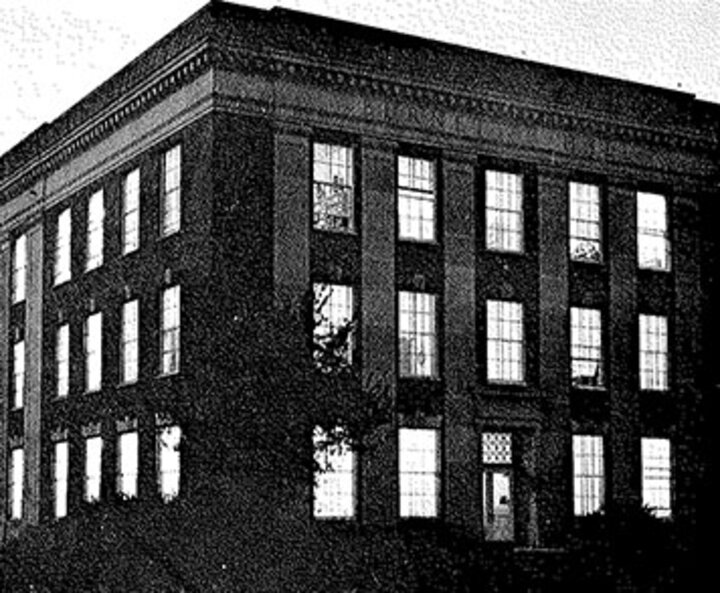
Journalism moves to its new home in Burnett Hall.
-
1954
KUON-TV, Nebraska’s public television station, goes on the air; television courses are added to the J school curriculum. The school is first accredited by the American Council on Education in Journalism.
-
1956
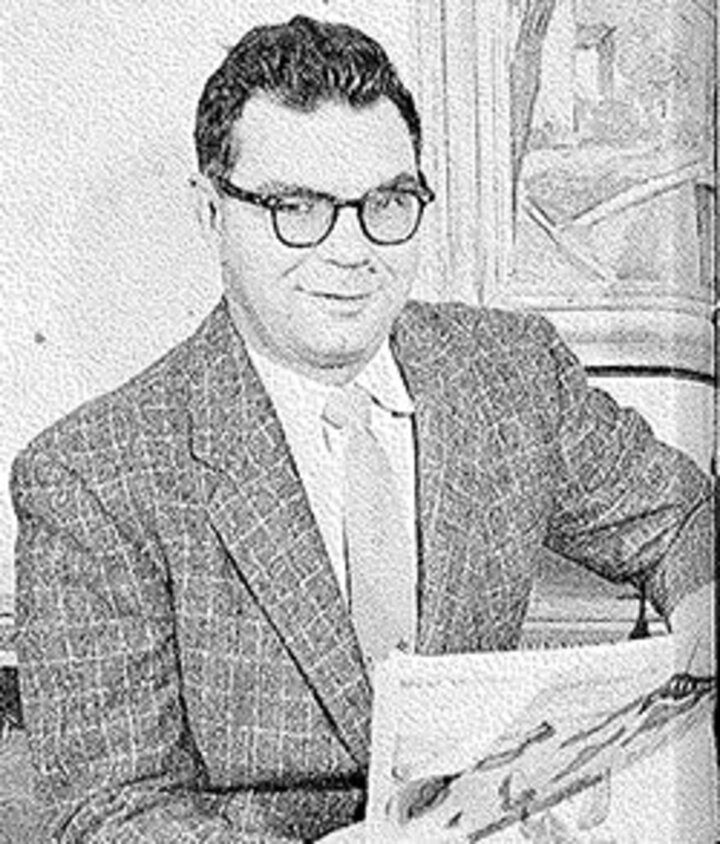
William Hall becomes director of the J school.
-
1963
The School of Journalism moves to Nebraska Hall, offering classes in advertising, broadcasting and news-editorial.
-
1966
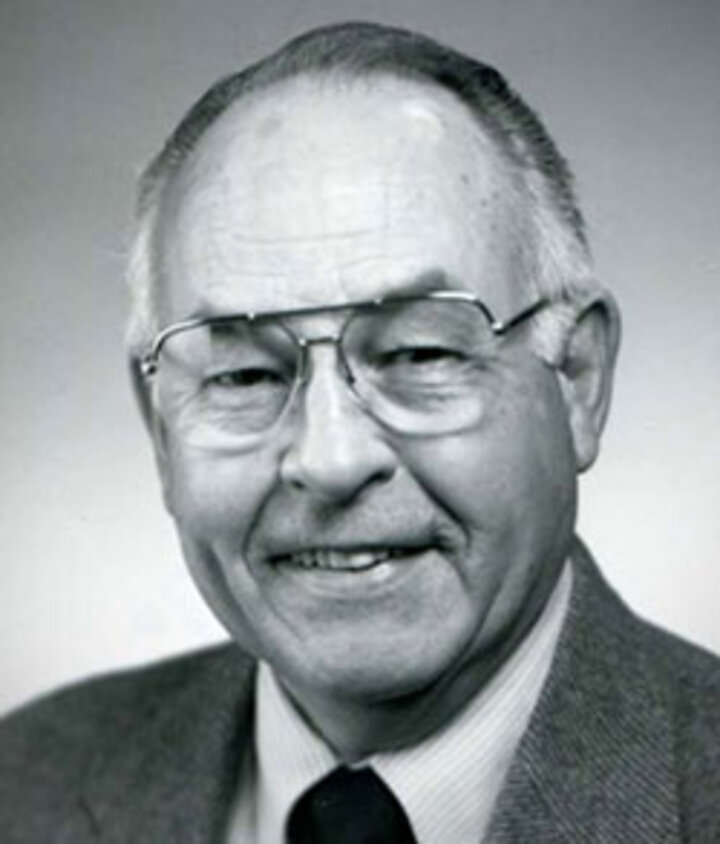
Neale Copple becomes director of the J school.
-
1970
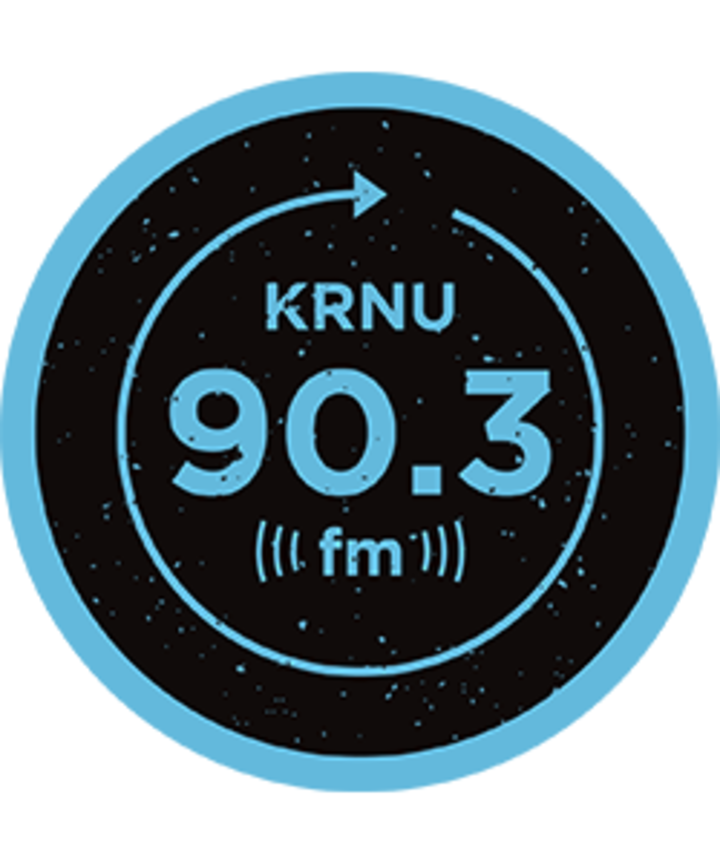
KRNU (FM), operated by broadcasting faculty/students, is granted a license by the Federal Communications Commission.
-
1972
The School of Journalism adds broadcasting and advertising courses to the curriculum and moves to Avery Hall.
-
1973
Neale Copple becomes national president of Association for Education in Journalism.
-
1974
The Nebraska Legislature passes a law authorizing a graduate degree in journalism.
-
1976
Journalism graduate degree courses start.
-
1979
The NU Regents move the School of Journalism to independent status, and Neale Copple's title is changed to dean.
-
1983
Graduate courses are taught via closed circuit TV in Omaha.
-
1985
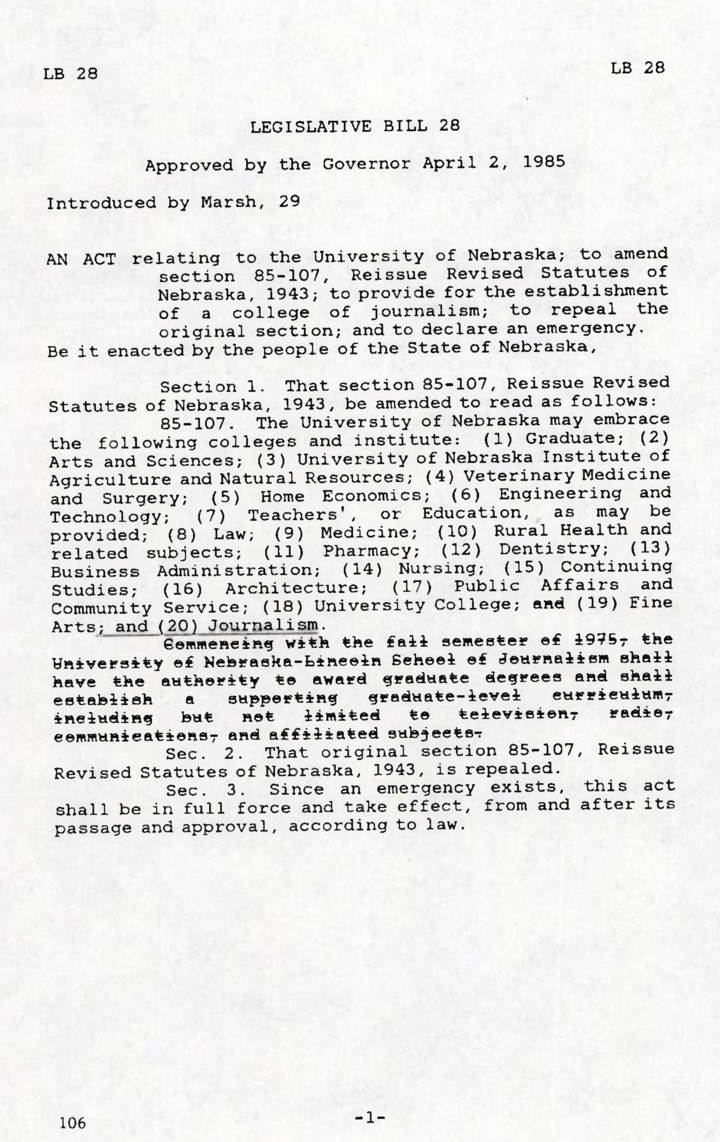
The School of Journalism is changed to a college as a result of a legislative bill that deals with University of Nebraska organization.
-
1990
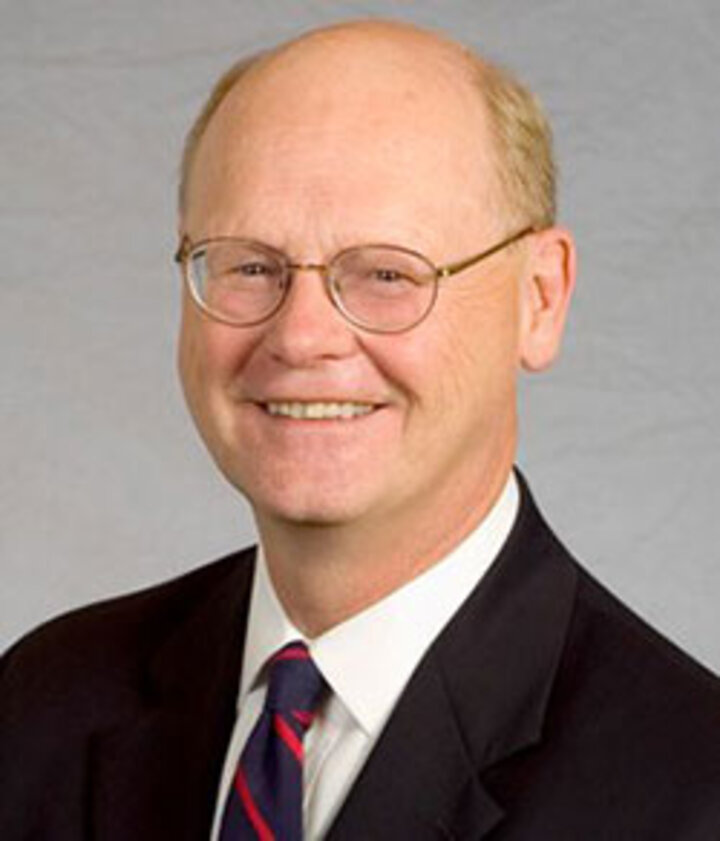
Neale Copple retires and Will Norton is named dean.
-
1994
An M.A. degree program is offered to distance students.
-
1999
The college begins teaching technical writing courses for engineering majors.
-
2000

Dean Will Norton becomes national president of the Association for Education in Journalism and Mass Communication.
-
2001
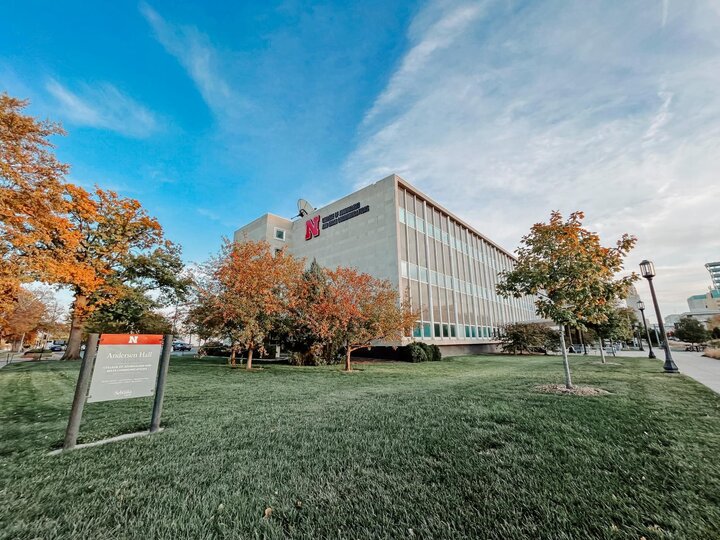
College of Journalism and Mass Communications moves to Harold and Marian Andersen Hall.
-
2004
The curriculum is revised to emphasize converged media, and business communication courses for business administration majors are added.
-
2005

Dean Will Norton is named journalism administrator of the year by Scripps Howard and the Freedom Forum.
-
2007
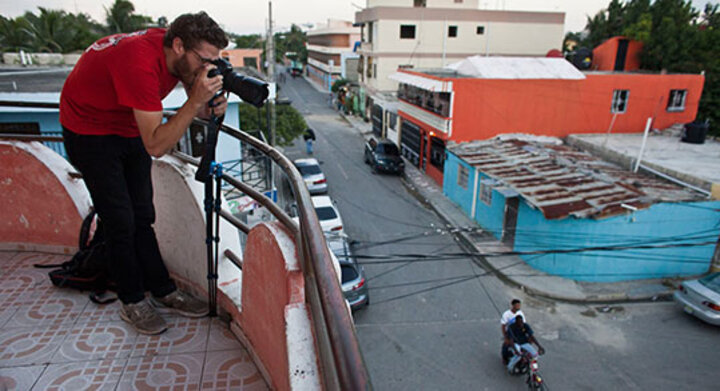
The college receives funding for the Buffett, Mangelsen and Sartore Chair of Photojournalism to provide support for photojournalists who document instances of human need around the world.
-
2008

The Omaha World-Herald founds the Real World Fellowship Program.
-
2009
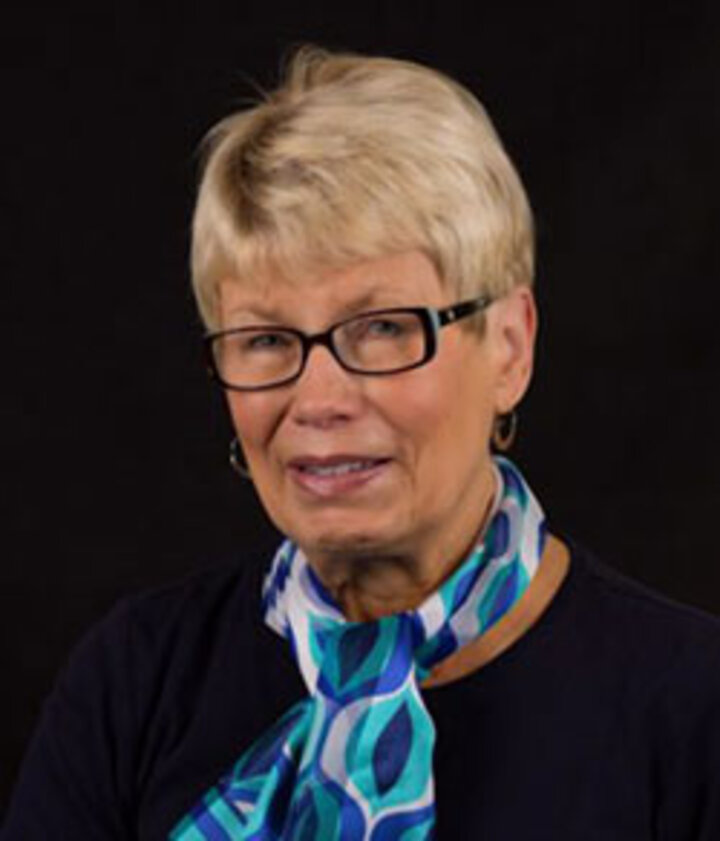
Dean Will Norton leaves UNL to become dean of the journalism college at the University of Mississippi. Charlyne Berens becomes interim dean.
-
2010

The college founds Jacht, a student-run advertising and public relations agency.
-
2010
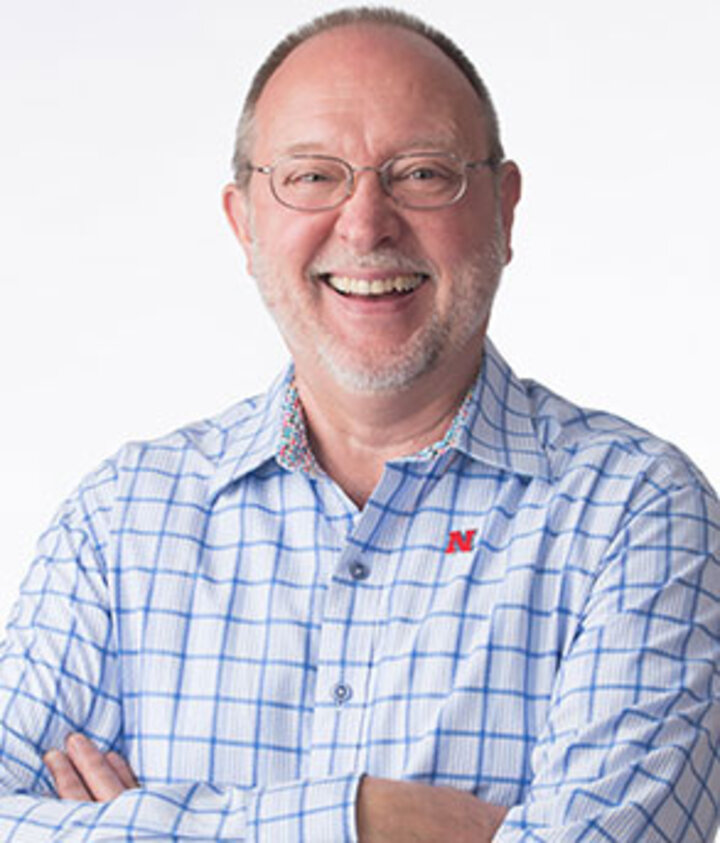
Gary Kebbel becomes dean of the college.
-
2012
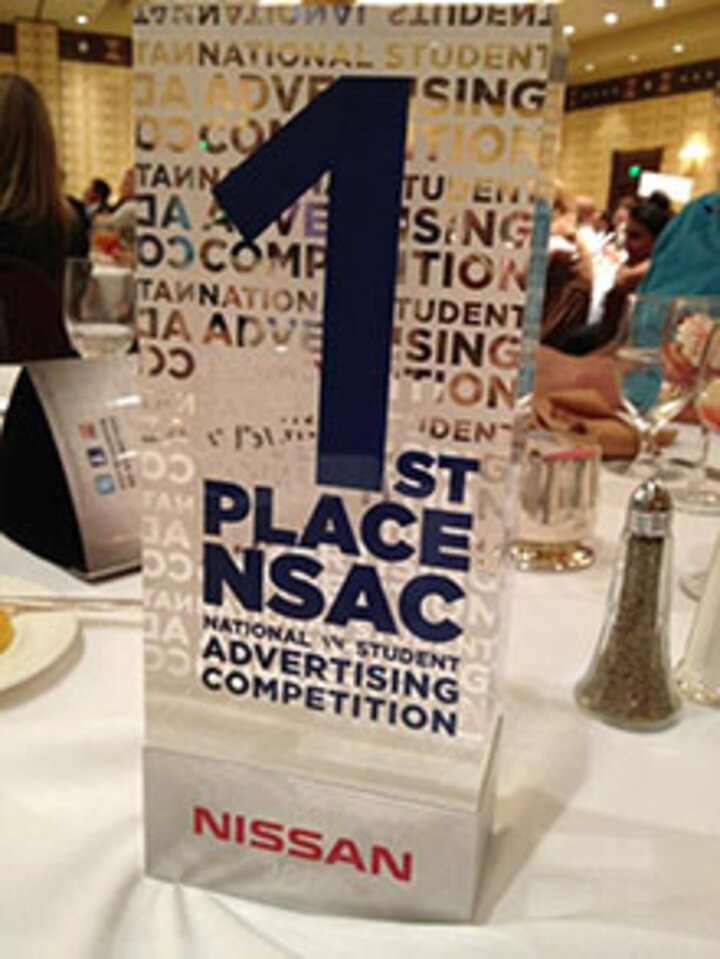
Advertising students from the CoJMC take first place in the 2012 National Student Advertising Competition.
-
2012
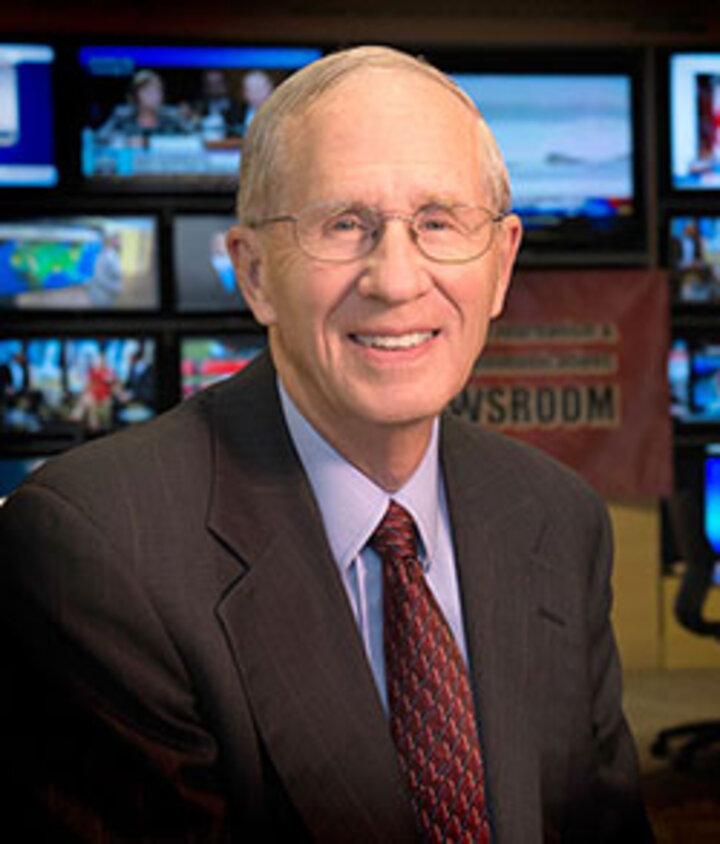
Jim O'Hanlon becomes interim dean of the college.
-
2013
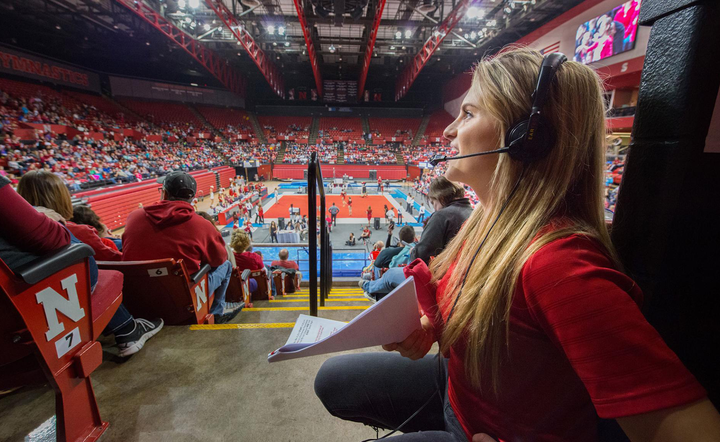
The college adds an undergraduate emphasis to prepare students to work in sports communication on either the news or promotional side.
-
2014
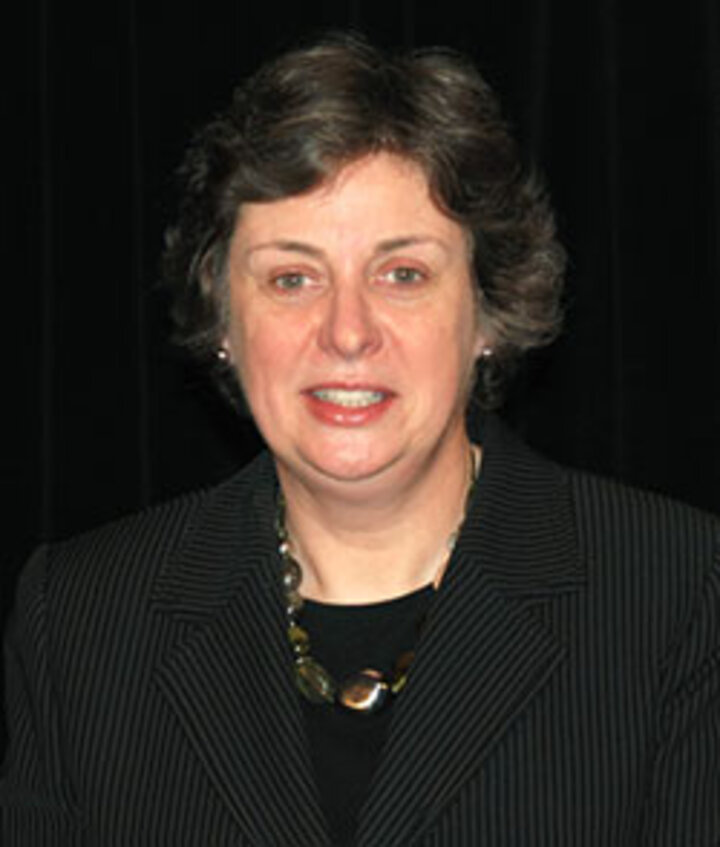
Maria Marron is named dean of the college, moving to UNL from Central Michigan University.
-
2016
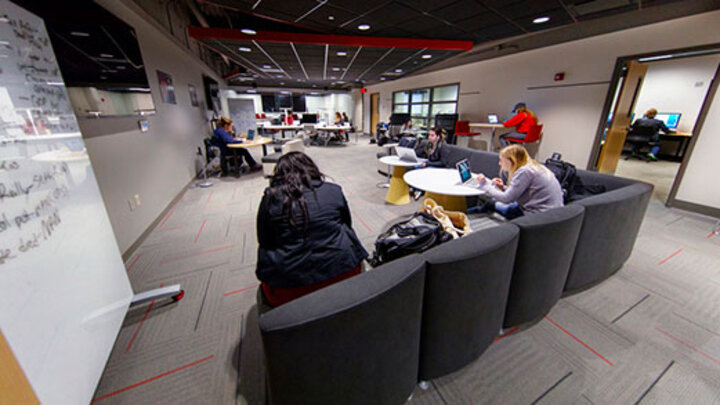
Emporium style visual communications curriculum launched. The Andersen Hall basement renovation is completed with the support of donors - Sam and Gil Peace, Harold and Marian Andersen, Dana and Lynn Roper.
-
2017
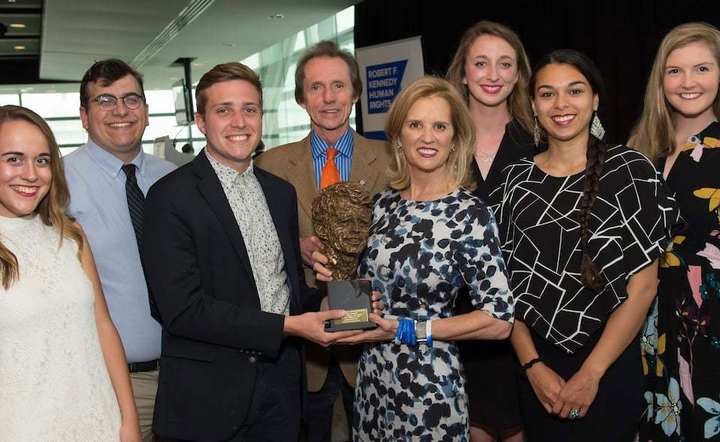
The Wounds of Whiteclay depth reporting project wins the Robert F. Kennedy Human Rights Journalism grand prize.
-
2017
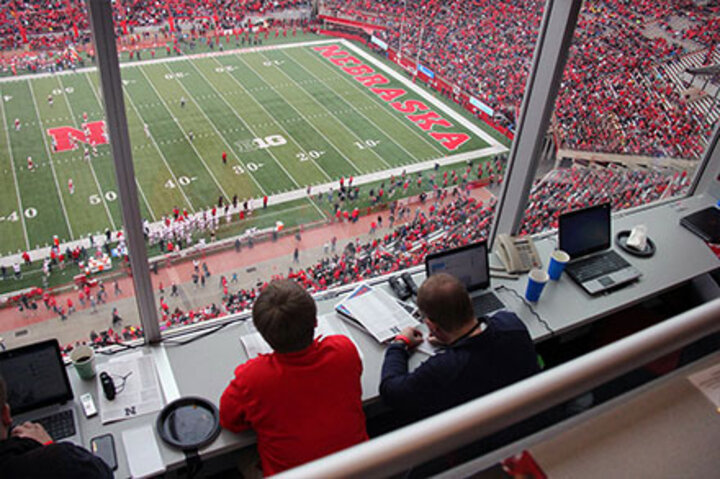
The college launches an undergraduate major in spors media and communication and a graduate certificate in public relations and social media.
-
2018
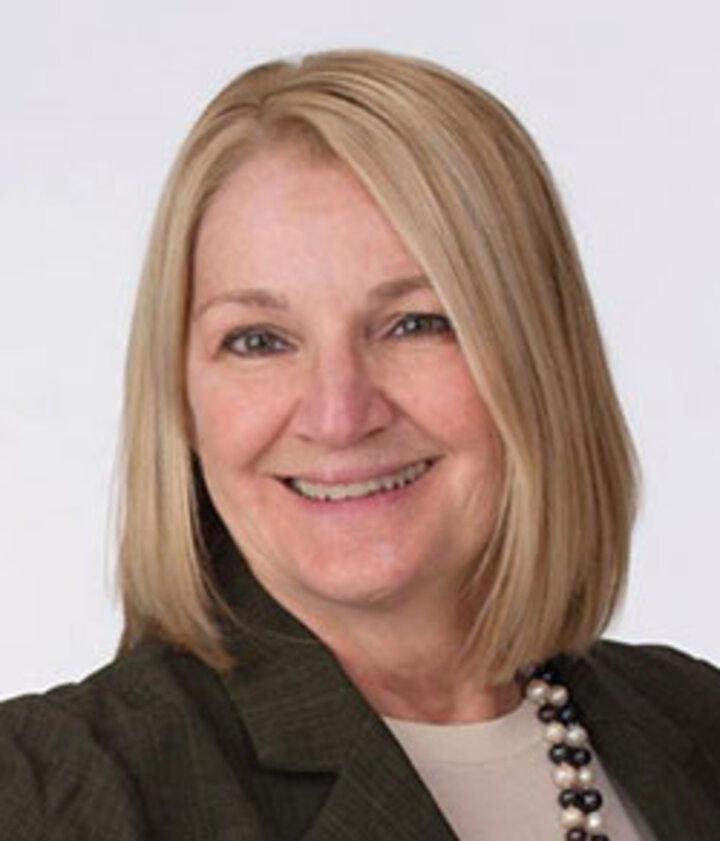
Amy Struthers is named interim dean and pop-up classes are introduced in the college.
-
2020
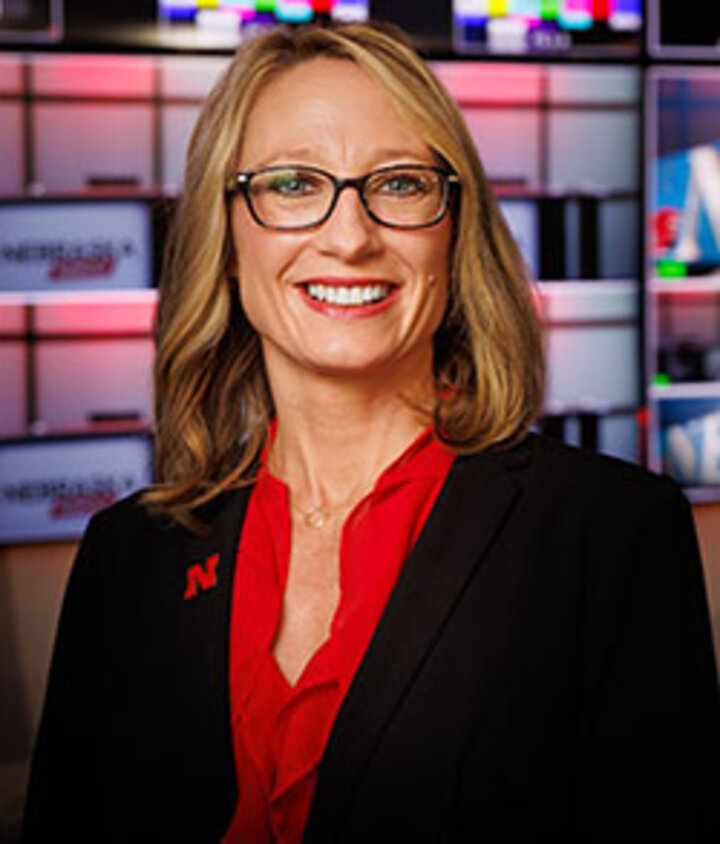
Shari Veil is named dean of the college.
-
2021
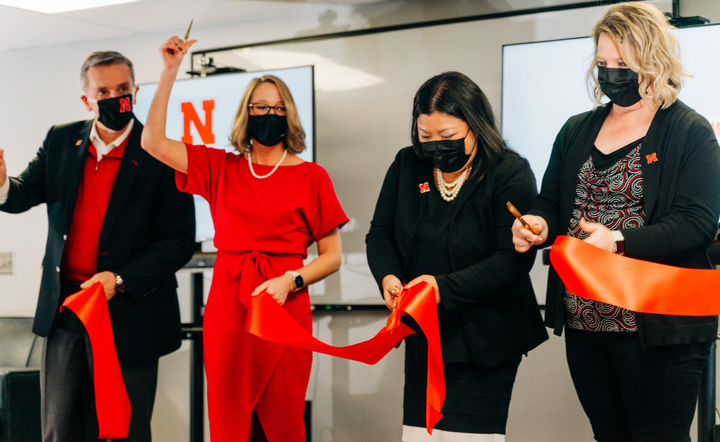
The college launches the Experience Lab, where students work with faculty liaisons and professional mentors to build their academic skill set while exploring their professional interests in one of the college's media outlets and agencies.
-
2022
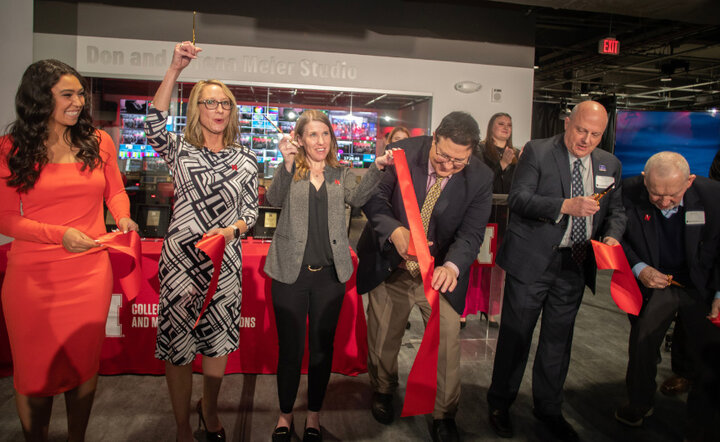
The college takes first place in the 2022 National Bateman Case Study Competition, renovations are complete on the Don and Lorena Meier Studio and the Pepsi Unlimited Sports Lab and the Deepe Family Endowed Chairs in Depth Reporting are established with the largest endowment in the college's history.
-
2023
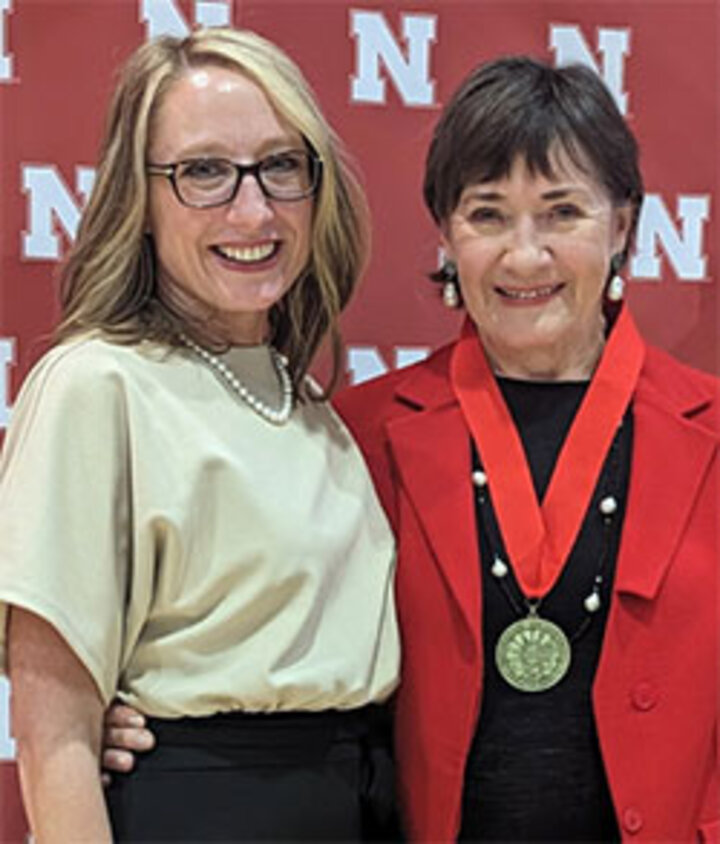
Alumna Jane Olson establishes the Jane T. Olson Endowed Deanship in the college.
When Will Owen Jones walked into a University of Nebraska classroom in 1894 to teach the first journalism class he started a blend of professional expertise and academic excellence that continues today. Jones later became famous as editor of the Nebraska State Journal, a predecessor of the Lincoln Journal Star. The journalism courses continued to evolve until, through the leadership of English professor Miller Moore Fogg, a School of Journalism was formed in 1923. Fogg became the first director of the School of Journalism and served until his death in 1926.
Other early leaders of the program included:
- Gayle Walker, 1926-1942, who had been Fogg's assistant.
- Harold Hamil, 1942-1944, who resigned to take an editorial position with a St. Louis newspaper.
- Forest Blood, interim 1944-1946, a business professor identified with the study of advertising.
After the end of World War II, the University of Nebraska J School made several important advances:
- Dr. William Swindler was named director in 1946.
- New quarters in Burnett Hall became available in 1948.
- Advertising classes continued to be part of the curriculum in cooperation with the Business College.
- Broadcast news classes were established in cooperation with the Speech Department, which had started to offer radio courses in 1937.
When Swindler went on to become a law professor at the College of William and Mary, William Hall became director in 1956 and led the expansion of the school's curriculum:
- When KUON-TV came on the air in 1954, the public television station's facilities made it possible for the college to offer television classes.
- All broadcasting courses moved to the School of Journalism in 1963.
- The advertising sequence of courses was developed during this time,
- The news-editorial major became very successful in the national Hearst Awards competition.
These national successes resulted in a White House meeting with President Kennedy, a meeting that included Director Hall, Professor Neale Copple and several students.
Neale Copple, who earned his undergraduate degree from NU and joined the faculty during Hall's tenure, became a national figure after the publication of his depth reporting book. When Hall left Nebraska for Ohio State in 1966, Copple succeeded Hall and led the program through more changes and to even greater national prominence:
- The news editorial, broadcasting, and advertising majors were improved.
- Broadcasting and advertising majors joined the news-editorial majors as approved for accreditation in 1972.
- Radio station KRNU (FM) went on the air in 1970 to provide professional opportunities for broadcasting students.
- The J-School moved to three floors in Avery Hall in 1972.
In 1974, the Nebraska Legislature passed a bill authorizing a graduate program for journalism/mass communication. By 1976, the graduate courses were realities. By the 1990s, the journalism graduate program was available to professional journalists throughout the world via several satellite and Internet technologies.
In 1979, the NU Board of Regents elevated the program from department status in the College of Arts and Sciences to an independent position. Neale Copple's title was changed to dean. A 1985 adjustment in Nebraska laws that govern the University of Nebraska changed the official name to the College of Journalism. The current name, the College of Journalism and Mass Communications, was adopted in the early 1990s.
When Copple retired in 1990, Dr. Will Norton, then chair of the Department of Journalism at the University of Mississippi, became dean. Norton, who continued the emphasis on blending professional and academic expertise, led the program toward even greater involvement and influence on the national and international levels.
Norton helped develop a plan to get more space and more modern facilities for the program. With the acquisition of the former Security Mutual Life building, renamed Harold and Marian Andersen Hall, the College of Journalism and Mass Communications began a new era in 2001. When Norton left Nebraska in 2009, professor Charlyne Berens served as interim dean for a year.
From 2010 to 2020, the college experienced rapid change as it grew and evolved with the industry. Gary Kebbel, whose background was in online news and whose most recent position was with the Knight Foundation, was the dean from 2010 until 2012 when he was named to head the Center for Mobile Media, a campus-wide initiative at the University of Nebraska–Lincoln. James O'Hanlon was then named interim dean. During his term, he helped the college establish professional academic advising to support students and help them graduate from college in four years. Maria Marron was named dean in 2014. Marron bolstered the college’s advising and recruiting and increased enrollment during her time as dean. In 2016, she oversaw the college’s successful reaccreditation by the Association for Education in Journalism and Mass Communications, continuing the college’s almost seven decades-long history as the only accredited journalism program in Nebraska. In 2017, the college established two new academic programs. The first is an undergraduate major in sports media and communication that provides students the opportunity to learn communication skills from across advertising and public relations, broadcasting and journalism and apply them to the sports industry. The second is a graduate certificate in public relations and social media that provides an opportunity for working professionals to graduate level skills they can immediately apply in their careers.
In 2018, Amy Struthers became interim dean. Struthers worked to connect alumni with current students and created innovative pop-up classes to expose students to the latest industry trends. In 2019, the college developed a second graduate certificate in financial communications in partnership with the UNL College of Business.
In 2020, Shari Veil was named dean of the college and launched the college-wide Experience Lab where students work with Professionals in Residence and Faculty Liaisons to develop content and/or strategy for one of the college's media assets or agencies. New Experience Lab programs were launched to meet student demands, including Buoy (a mission-driven non-profit advertising and public relations agency), Heartland (a community and economic development-focused webzine) and Nebraska Nightly (a broadcast news, weather and sports program). In 2021, the college added over 13,000 square feet dedicated to experiential learning by leasing the third floor of the Lincoln Children's Museum. In 2022, the college remodeled the second floor of Andersen Hall to build the Don and Lorena Meier Studio, an integrated three-set television studio and newsroom. In 2023, Pepsi Cola of Lincoln became the primary underwriter of Husker Sports broadcasts on 90.3 KRNU and funded the construction of the Pepsi Unlimited Sports Lab.
About the Andersens
Andersen Hall is named after Harold and Marian Andersen, whose support has provided many students with educational opportunities and state-of-the-art resources. As alumni of the University of Nebraska–Lincoln, the Andersens continue to contribute to the university and community.
Harold Andersen began his career at the Omaha World-Herald in 1946. He rose through the ranks, serving as president from 1966 to 1986 and publisher until 1989. Andersen was the first American president of the International Federation of Newspaper Publishers and the only Nebraskan to lead the American Newspaper Publishers Association. He also served on the Associated Press board and chaired the World Press Freedom Committee.
Marian Andersen was the first woman to lead the Heartland Chapter of the American Red Cross and served as vice chairman of the American Red Cross Board of Governors and The Public Broadcasting System. She received numerous honors, including United Way Citizen of the Year and the Nebraska Builders Award. Marian co-chaired the Nebraska Shakespeare Festival and served on various boards, including the Nebraska Arts Council and Opera Omaha.
